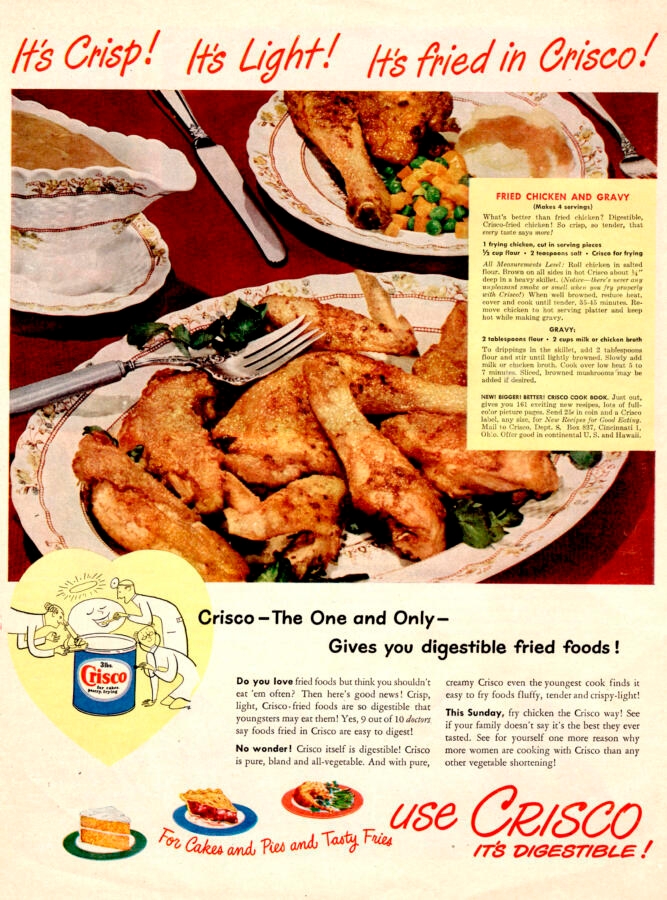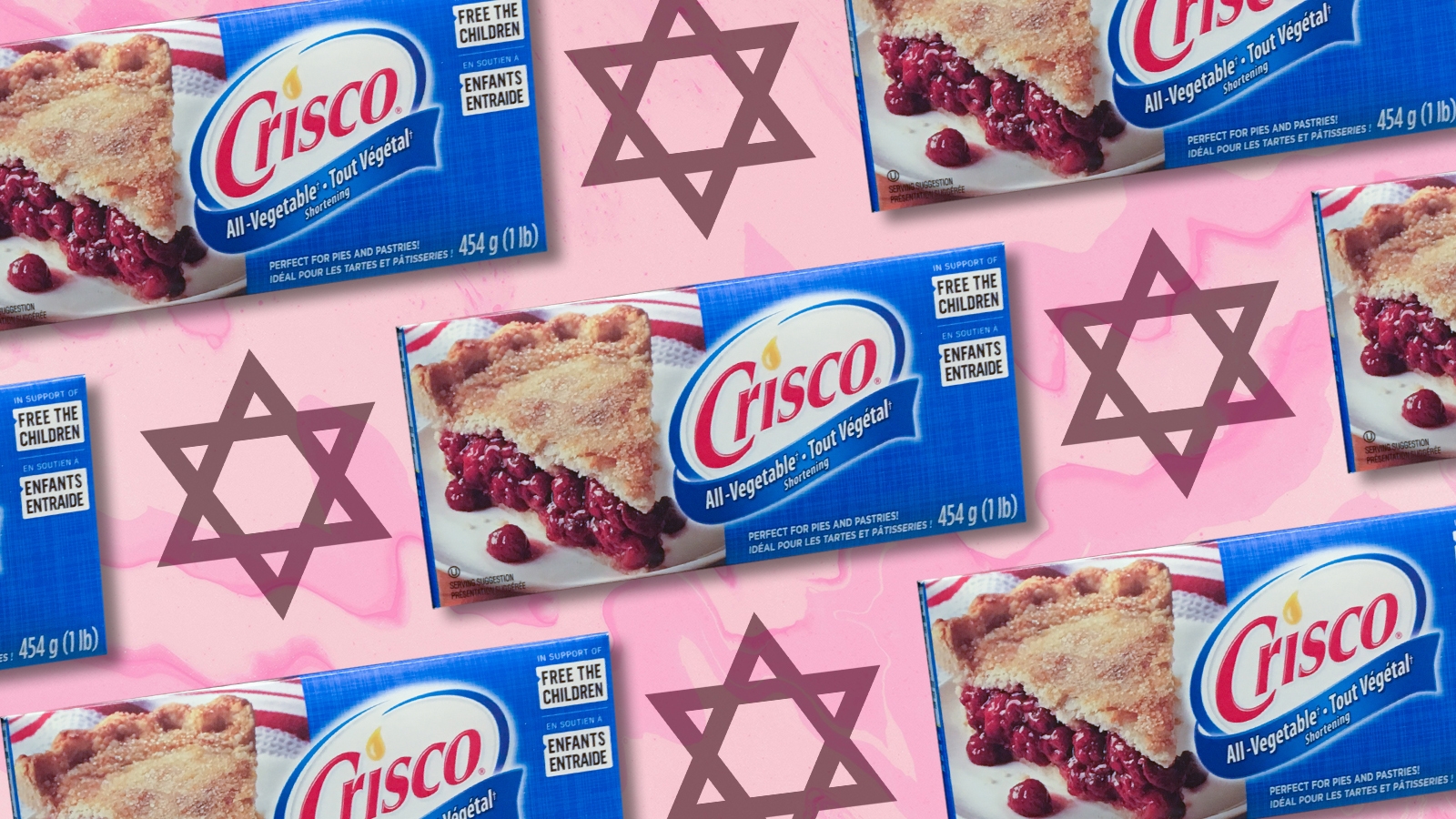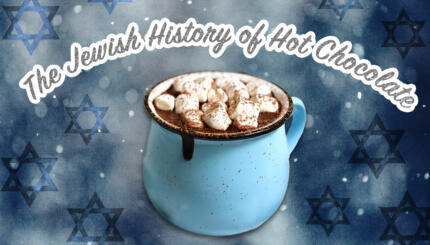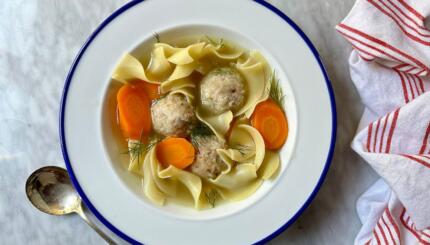Crisco is a vegan cooking fat and an icon of the Ashkenazi-Jewish American Dream.
For over a century, the strange, oily gloop has graced kosher restaurants, holiday cookbooks and hand-scribbled recipe cards in Jewish homes across the nation, becoming a (contested) symbol of Jewish American identity and culinary tradition .
But how did Judaism get to Crisco as America is to apple pie? The answer lies at the intersection of early 20th-century consumerism and Jewish American culture.
First, we need to take a look at the origins of Crisco itself. Debuted in 1911 as a product of Cincinnati’s Procter & Gamble Co., it started as a strange solution to a strange problem. Textile production skyrocketed during the Industrial Revolution, leaving America with a surplus of leftover cotton seeds. No one could figure out what to do with them — until chemists learned to extract the oil and combine it with hydrogen, which created a cheap alternative to animal-based fats like lard and tallow. Initially, Procter & Gamble intended to use the new substance to make candles. But they ended up selling it as a food product, instead.
The Nosher celebrates the traditions and recipes that have brought Jews together for centuries. Donate today to keep The Nosher's stories and recipes accessible to all.
The public wasn’t totally sold on the idea. Aside from sneaky CEOs cutting costs by substituting it for pricier olive oil, cottonseed oil wasn’t typically used in the food business. It was primarily intended for soap, artificial dyes and explosives. There was even some debate over whether cottonseed oil is really a food (spoiler: it isn’t; Procter & Gamble would later switch to other vegetarian oils).

Eventually it caught on with the help of some clever, if somewhat dishonest, marketing. But sales still weren’t remarkable among established Americans. Given the product’s versatile non-dairy, non-meat nature, Procter & Gamble’s PR team decided to give a hard sell to the nation’s newly minted community of Eastern European Jewish immigrants. One 1913 newspaper advertisement, printed in English and Yiddish and distributed throughout the United States, made the lofty claim that “The Hebrew Race has been waiting 4,000 years for Crisco.”
4,000 years! 4,000 years spent wandering through deserts and across the globe, all for… non-dairy shortening? Shockingly, the ploy worked; American Jews went wild for Crisco — and haven’t looked back since.
There are evident perks: It’s kosher, and pareve, too. That means that, when she has Crisco on hand, the good Jewish housewife doesn’t need to buy both schmaltz — for meat — and butter — for dairy — thus saving money and resources. And, a hundred or so years ago, Crisco was considered (or, at least, marketed as) a healthy alternative to traditional animal-based cooking fats.
But more important was Crisco’s cultural significance. For new immigrants, the feeling of belonging was vital. There was a constant struggle between old and new, religion and nation, and tradition and assimilation. Here was a practical solution that didn’t require compromise. Kosher enough for the rabbi, stylish enough for the all-American woman and economical to boot, Crisco was a tasty, practical reminder that you could be both Jewish and American — and be so with class and tact.
Procter & Gamble’s 1933 cookbook, “Crisco Recipes for the Jewish Housewife,” cemented the product’s popularity within the Jewish community. Each recipe was printed in both English and Yiddish. Offerings ranged from traditional favorites, like kugel, to American icons such as southern fried chicken and macaroni salad — all, of course, with a generous helping of Crisco. Despite the economic hardship of the Great Depression, sales continued to soar. Over the course of a century, Crisco grew from its resourceful beginnings to the heart of American Jewish cooking.
In recent years, though, Crisco has amassed slews of controversy. For one thing, it’s been condemned for ruining the magic of traditional (i.e., schmaltzy) Jewish cooking with its sub-par flavor. Perhaps more shocking is the revelation that Crisco, marketed as an “all-vegetable shortening” doesn’t actually include any vegetables — at all. Even though it’s no longer made from cottonseed oil, Crisco’s modern key ingredients, soybean and palm oil, aren’t derived from vegetables, or even fruits, but from grains. They’re not particularly healthy or environmentally friendly, either. So, while definitely a little more edible, modern Crisco is not exactly a huge improvement on its cottonseed predecessor.
Why do we continue to use Crisco? I think that, like with many Ashkenazi Jewish cultural rites, the answer can be most accurately summed up by Tevye in “Fiddler on the Roof”: TRADITION! So next time you bite into a Crisco-coated latke, or hamantaschen, or maybe even fried chicken, you too can follow in the footsteps of our foremothers and savor the unctuous, oily flavor of Jewish American history.
Get a taste of Jewish American Crisco cooking here.



